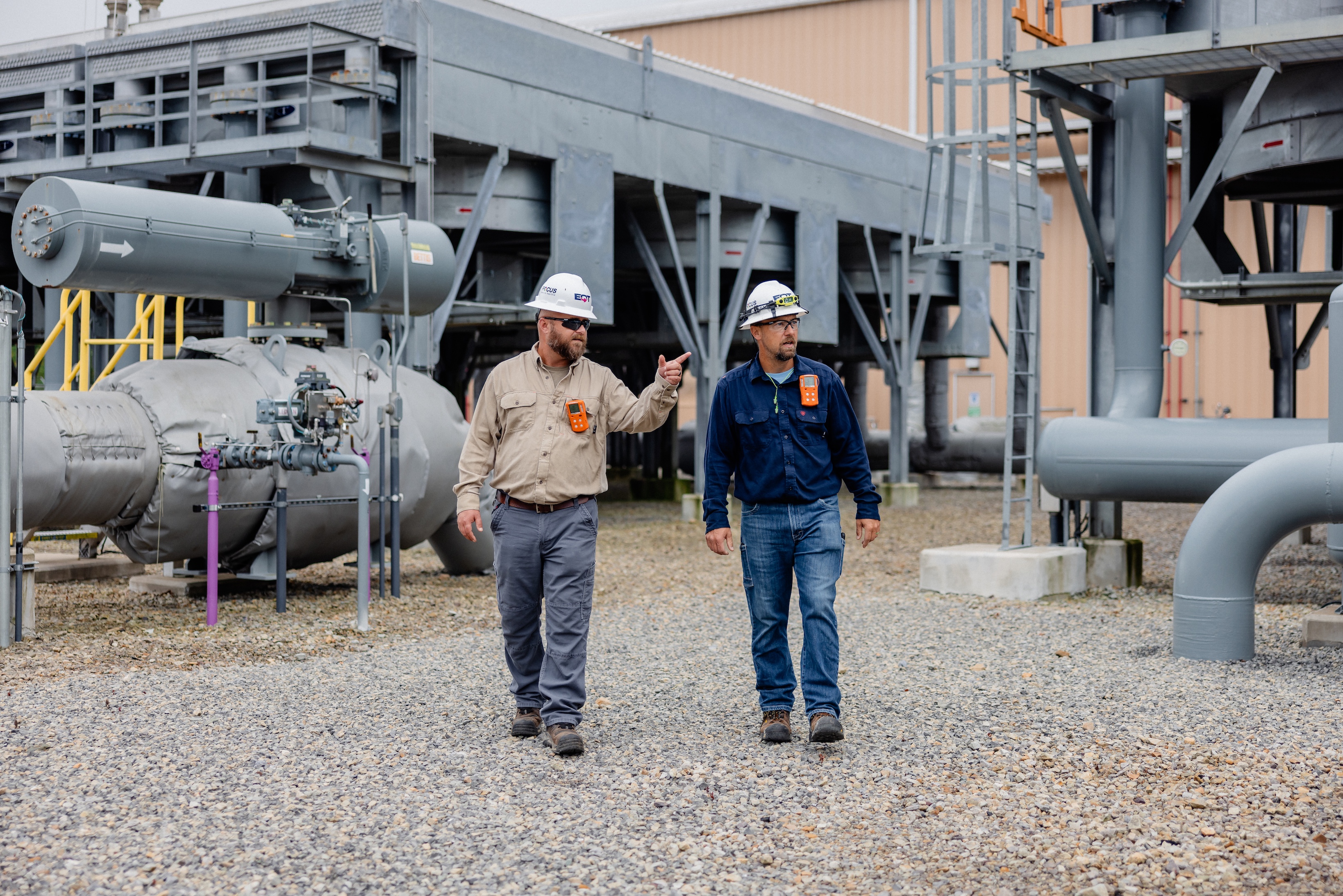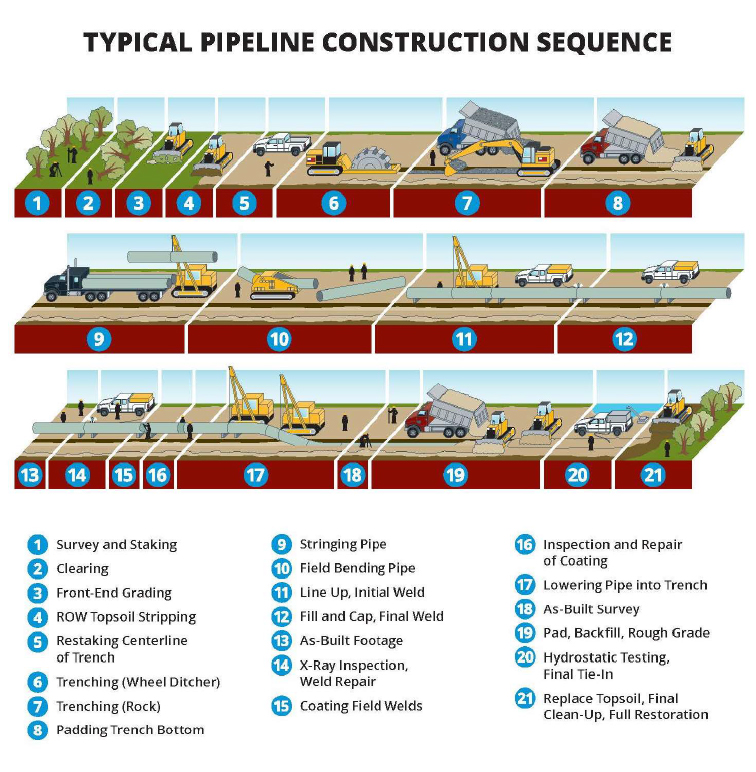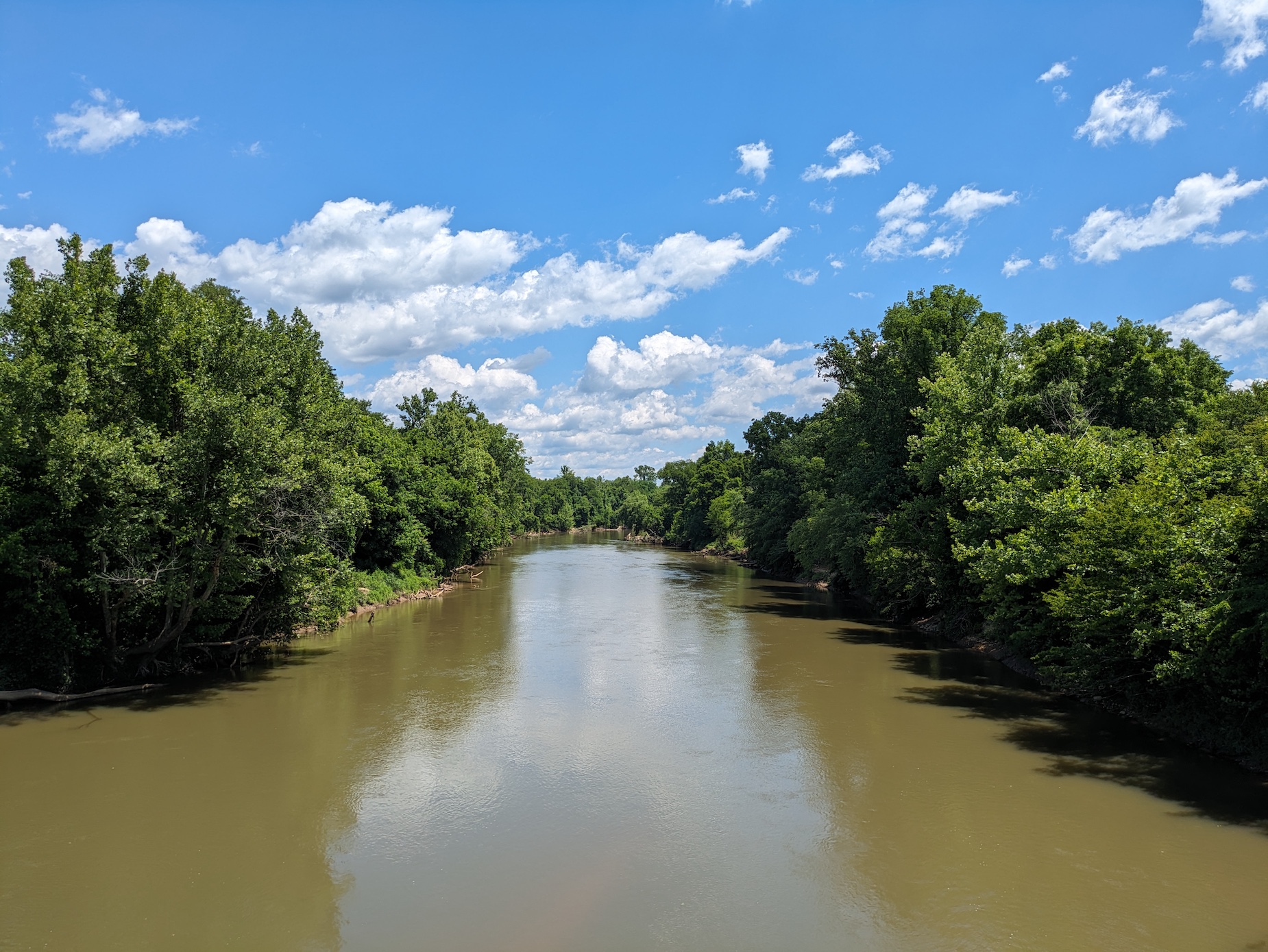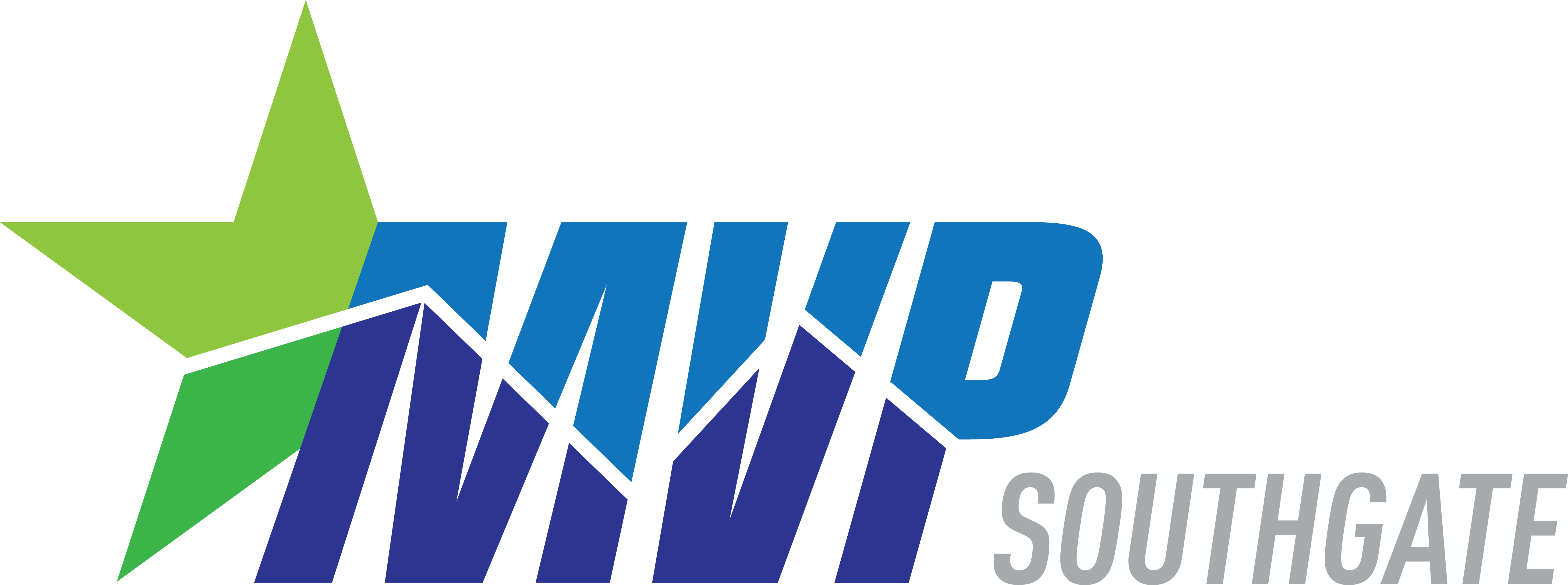Safety & Environmental Stewardship
Pipeline Safety
In the U.S., transmission pipelines are among the safest ways to transport natural gas. MVP Southgate is designed to meet or exceed federal safety standards and uses proven materials, testing and quality controls used across the national pipeline grid.

Construction Techniques
As currently proposed, the pipeline will be 30 inches in diameter and will require approximately 50 feet of permanent easement, with up to an additional 50 feet of temporary easement during construction (for a total of up to 100 feet during construction, depending on conditions). As proposed, the project will require one compressor station. After appropriate approvals and permits have been received, construction of the project is expected to begin in 2026. Any construction noise, dust, and traffic issues will be kept to a minimum and all construction mitigation measures and safety procedures set by the FERC and other agencies will be followed.
Clearing, Grading, and Trenching
Before construction of the pipeline occurs, surveys must be conducted and the crew must clear the area by removing trees, large rocks, and debris from the right-of-way. After clearing occurs, grading takes place to prepare a level surface for heavy construction activity. Equipment is then mobilized to dig the trench where the pipeline will lay, at a minimum of 36 inches below the surface, which surpasses the required minimum of 30 inches as regulated by the U.S. Department of Transportation. As dirt is removed, the topsoil and subsoil are often saved for later use in the restoration process.
Stringing, Welding, and Coating Pipeline
Pipelines typically consist of pipe segments that are 40 to 80 feet long. These segments must be moved to the trench location, assembled, and welded before being placed in the trench. A bending machine will be utilized to make bends in the pipe to allow the pipeline to conform to unique topography of each segment of pipe along the route. Pipe segments are welded together to ensure maximum strength and integrity of the pipeline, and when necessary, an external coating will be applied to prevent moisture from causing any type of possible corrosion. The MVP Southgate team will X-ray 100% of the individual welds to ensure the integrity and longevity of the pipeline prior to placing the line in-service.
Depositing, Backfilling, and Testing
Once the pipeline is properly and accurately welded, it is lowered into the trench using equipment with sidebooms and slings to prevent the pipe from falling. When the pipe is successfully laid, the construction crew will begin to backfill the trench. Careful measures are taken to ensure the topsoil is returned to its original position, while special precaution is given to preserving the integrity of the pipeline and coating during this process. Before placing the pipeline in-service, the line is water-pressure tested as a final quality assurance test.
Restoration
The final step of the construction process is to restore the right-of-way and easement property as closely as possible to its original condition. Steps in this process may include; replacing topsoil, removing rocks, spreading fertilizer, or restoring fences. The MVP Southgate team will work with landowners and agencies to ensure the proper restoration of both private and public property.

Public Awareness
Pipeline markers identify locations; always Call 811 before digging. MVP coordinates with local emergency responders and provides public awareness materials.
Pipelines are the safest way to transport natural gas overlong distances. Natural gas pipelines are built according to rigorous safety standards and have an outstanding safety record. According to the U.S. Energy Information Administration, the U.S. natural gas pipeline network consists of more than 300,000 miles of interstate and intrastate transmission pipelines
Mountain Valley Pipeline, LLC (Mountain Valley) will meet or exceed all U.S. DOT safety requirements during construction. Safety will be engineered into all facets of pipeline design, construction, and operation. The project will utilize trained and experienced inspectors who will carefully monitor pipeline construction to ensure compliance with safety standards and construction specifications. High quality steel pipe will be used in the construction of MVP Southgate, including adding protective coatings to the pipe during manufacturing. All pipe will be carefully inspected before it is installed to ensure it meets quality standards. After installation all pipeline field welds will be tested and inspected.
- No construction of buildings or other structures would be permitted on the permanent right-of-way.
- No planting of trees or other deep-rooting plants that may obstruct the permanent right-of-way would be permitted.
- No excavation or impounding water within the permanent right-of-way would be permitted without permission from the company
Safety is our priority in everything we do. Mountain Valley would ensure safe operation by maintaining the right-of-way to provide ready access and operate the pipeline in accordance with U.S. DOT and Federal Energy Regulatory Commission regulations. Regular inspections will occur to ensure pipeline integrity. The pipeline will be monitored 24-hours-a-day, 365-days-a-year using sophisticated computerized systems and around-the-clock personnel.

Land & Wildlife Protections
The amended route reduces water crossings and omits a compressor station, lowering potential construction impacts relative to earlier concepts; the project will follow federal and state environmental requirements.
